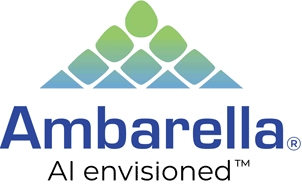Full software stack for autonomous and semi-autonomous driving
19-12-2023 | Ambrella, Inc. | Semiconductors
Ambarella, Inc. has announced its AD software stack, which is mainly based on deep learning AI processing for all of its modular components, including environmental perception, sensor fusion and vehicle path planning. This leading-edge AD stack and the company's CV3-AD AI domain controller SoC family were developed in conjunction, so the stack runs optimally on the SoC's CVflow AI engines, minimising power consumption and the processing load for its on-chip Arm cores. Also, these SoCs provide optimal processing for vision and radar sensing and fusion, based on the company's deep knowledge and experience with these sensing modalities. Additionally, Ambarella's stack provides a flexible implementation model, enabling automotive OEMs to leverage any or all of its modules in combination with their own software intellectual property.
"This software stack draws on our more than 25 years of experience, building on the heritage of our VisLab Automotive R&D Team, whose AD stack has steadily evolved to take advantage of our latest AI SoCs," said Fermi Wang, President and CEO of Ambarella. "Today, we are realising the vision of our VisLab acquisition in 2015, which, in combination with our algorithm-first philosophy for designing purpose-built SoCs, has culminated in this platform that will enable automakers to deliver on the promise of autonomous driving."
One hallmark of the company's AI-based based software stack is its deep-learning based planner. This dynamic vehicle path planning module facilitates a natural driving experience. That functionality resulted from the company's experience and investments in its evolving R&D vehicle fleet, which enabled the 'deep planner' module to be trained with data from various real-world scenarios.
This R&D vehicle fleet's latest members include a sensing suite comprising mono and stereo cameras and its Oculii 4D imaging radar, and the CV3-AD is doing all of the processing. While the company has many years of AD and sensor-processing experience that led to this optimal configuration, its solutions are flexible to support OEMs' specific sensing suites (including the option for adding LiDAR).
Another key feature of the company's software stack is that it only requires readily available SD maps, eradicating the need for pre-generated HD maps. Instead, the stack (running on the CV3-AD) generates real-time HD maps using live environmental data from the vehicle's sensing suite. In contrast, the pre-generated HD maps used by other AD systems are brittle and expensive to maintain, requiring centimetre-level localisation capability. They are also unreliable under dynamic conditions such as road construction or accidents. Also, its real-time HD map generation is excellent for handling difficult AD scenarios, such as downtown areas in large cities with roundabouts, narrow roads with parked vehicles, heavy traffic, construction, and a high density of pedestrians, cyclists and other vulnerable road users.
This modular AD software and hardware solutions provide OEMs with a scalable platform that allows them to select the CV3-AD family member with the right mix of performance and features for each model in their fleets, opening the door for autonomous features in mass-market vehicles. This incorporates a wide range of autonomous and semi-autonomous vehicle implementations, from fully featured L2+ systems to higher levels of autonomy.
The CV3-AD SoCs run the company's complete AD stack with industry-leading power consumption, supplying superior AI performance per watt and simplifying thermal management. In the growing EV market, processing efficiency is especially important to increase battery range. Further, because this software and hardware were designed to work optimally together – with the stack using just a small fraction of the CV3-AD's Arm processing power – automakers have plenty of headroom for integrating additional software to create differentiated features, including those for functional safety.



